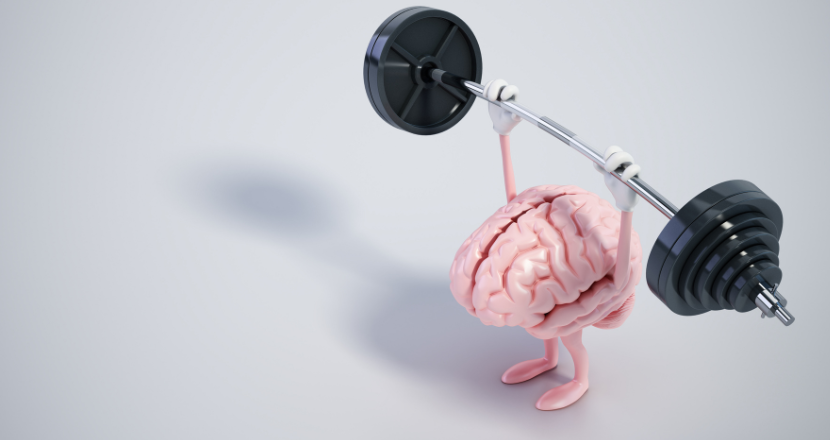Somatic exercises are powerful tools for improving physical, emotional, and mental well-being. By focusing on internal physical perceptions and experiences, these exercises help individuals reconnect with their bodies, release tension, and address various challenges in physical and mental health.
This guide will delve into the world of somatic exercises, providing insights into their benefits and offering practical exercises for pain, anxiety, post traumatic stress disorder, and more.
re-origin is a science-backed neuroplasticity and brain retraining program that helps you implement new thoughts and behaviors to reduce the frequency of chronic illness and improve your overall health. Learn more about the re-origin program here.
Introduction to Somatic Exercise
Somatic exercise, also known as “somatic movement”, is a type of movement therapy that emphasizes internal physical perception and experience. Somatic exercises are designed to enhance body awareness and improve physical function through mindful movement. These exercises stem from the field of somatics, which focuses on the internal experience of the body (“soma”) and the mind-body connection.
The exercises are grounded in the principle that mental and emotional factors can result in physical tension and vice versa. By focusing on the felt sense of movement, individuals can release tension, improve mobility, and foster a deeper sense of connection with their bodies.1
When to Use Somatic Exercise
Somatic exercises can be practiced anytime, anywhere, and at any activity level. They are particularly useful in situations of high stress or anxiety, after long periods of sitting or inactivity, or when experiencing chronic pain. Regular practice can also be a preventive measure, helping to maintain physical and mental health.
Neuroplasticity and Somatic Exercises
Neuroplasticity refers to the brain’s ability to reorganize itself by forming new neural connections throughout life. This capability allows the brain to adjust in response to new information, sensory experiences, development, damage, or dysfunction. Somatic exercises leverage this principle by encouraging new patterns of movement and awareness, which can help rewire the brain’s perception of the body and its sensations. When individuals repeatedly practice somatic exercises, they essentially teach their brains to recognize and adopt new, pain-free ways of moving and sensing stimuli.
Mind-Body Connection
The mind-body connection refers to the understanding that mental and physical processes are deeply intertwined. Somatic exercise fosters an acute awareness of physical sensations, thoughts, and emotions, helping individuals to recognize and modify the ways in which their mental states affect their physical bodies. This conscious awareness and integration of mind and body can lead to improved motor, cognitive, and emotional function, as the brain becomes better attuned to the body’s needs and potential.
By paying close attention to the body’s signals, individuals can learn to identify and correct dysfunctional movement patterns or tensions that may be contributing to pain or reduced function. This mindful engagement helps bridge the gap between mental intention and physical action, leading to more coordinated and efficient movement, and improved emotional awareness.4
Benefits of Somatic Exercise
Somatic movement is designed to enhance bodily awareness and improve physical function through mindful movement. Here are several key objectives of somatic practices:
- Increase Body Awareness: Somatic exercises help individuals become more aware of their bodily sensations, movements, and positions. This heightened awareness can lead to a better understanding of one’s own body, how it functions, and how it responds to stress, tension, and relaxation.4
- Release Muscle Tension: Through gentle, controlled movements, somatic exercises aim to release chronic muscle tension that may be contributing to pain, discomfort, or limited mobility. This is often achieved by re-educating the nervous system to stop sending signals that keep muscles tight, allowing for relaxation and ease of movement.4
- Improve Movement Efficiency: By focusing on the quality of movement rather than the quantity, somatic exercises encourage more efficient, fluid, and graceful movements. This can lead to improved performance in physical activities, reduced effort in daily tasks, and a decreased risk of injury.4
- Enhance Mind-Body Integration: Somatic exercises promote a deeper connection between the mind and the body, helping individuals to integrate their mental and physical experiences and connect more deeply with their internal self. This improved integration can enhance overall health, reduce stress levels, and increase resilience to physical and emotional challenges.3
- Facilitate Healing and Recovery: For those recovering from injury or dealing with chronic pain, somatic exercises offer a gentle and effective approach to facilitate healing. By focusing on gentle movements that respect the body’s limits, these exercises can help restore function and reduce pain without causing further harm.5
- Promote Relaxation and Stress Reduction: The mindful and introspective nature of somatic exercises can have a calming effect on the nervous system. By helping you become more aware of and at peace with your own emotions, it promotes relaxation and a decrease in stress on the body and mind.1 The mental benefits are just as valuable as the physical.5
re-origin’s 21+ Favorite Free Somatic Exercises
1. The 1-Minute Stress Reliever
This quick stress-busting exercise demonstrated by Katie offers an immediate solution to reduce stress and reconnect with your body. It involves taking deep breaths, internal awareness, and relaxation techniques that can be performed in just 60 seconds, making it perfect for a quick break during a busy day.
2. Eye Yoga for Vagus Nerve Stimulation
Join Ben in this video as he introduces simple eye movements designed to stimulate the vagus nerve, which plays a crucial role in regulating stress responses. This practice not only helps reduce stress but also combats the negative effects of prolonged screen time.
Read more about Vagus Nerve Exercises.
3. Get Rid of Nervous Energy With Body Shaking
Katie guides viewers through a body-shaking exercise to release nervous energy and tension. This technique, inspired by natural responses found in animals, is an effective way to connect with the present moment by making a mind-body connection before or after stressful situations.
4. Get “Unstuck” With This Brain-Based Movement
Ben demonstrates circular brain-based movements designed to break through mental stagnation and boost energy levels. This exercise encourages gentle movement patterns with fluidity and motion, countering feelings of being stuck or overwhelmed.
5. Burn Off Excess Cortisol & Decrease Anxiety
This video with Katie showcases four large body movements that help to burn off cortisol, the stress hormone, and decrease anxiety levels. It’s a quick and accessible way to achieve a sense of calm and stress relief.
Learn more: How to Lower Cortisol: Understanding and Managing Your Stress Hormone
6. 2 Minute Body Scan To Enhance Brain-Body Connection
Katie introduces a two-minute body scan exercise aimed at strengthening the brain-body connection by bringing awareness to various bodily sensations without judgment.
7. Quickly Calm Your Nervous System with Lymphatic Stimulation
In this video, Ben explores lymphatic stimulation techniques for immediate relaxation and anxiety relief, offering a practical approach to calming the nervous system and improving mental health.
8. Decrease Anxiety in 90 Seconds With Grounding
Join Katie as she demonstrates a quick and effective grounding exercise to alleviate anxiety and overwhelm, providing an express route to tranquility in just 90 seconds.
Learn more: Somatic Exercises for Anxiety: Harness the Mind-Body Connection
9. Release Tension & Stress with Progressive Muscle Relaxation
Explore the art of Progressive Muscle Relaxation (PMR) with Katie, a technique aimed at improving body awareness and releasing deep-seated stress by progressively tensing and then relaxing a specific muscle group.
10. 3 Gentle Yoga Poses to Decrease Anxiety
Katie shares three gentle yoga poses specifically selected to combat anxiety and foster a sense of calm and grounding. All forms of yoga are considered somatic movement, so this is a great tool to introduce yourself to specific somatic techniques.
11. Reset Your Nervous System With Bilateral Stimulation
Join Ben as he demonstrates bilateral stimulation techniques to balance the brain’s hemispheres and achieve a calm, focused state, suitable for moments of stress or when needing to find flow.
Learn more: How to Reset A Dysregulated Nervous System in 6 Steps
12. Elevate Your Mood & Energize Your Body With This Simple Breathing Pattern
Join Katie in this brief yet effective tip to elevate your mood and energize your body, perfect for those mid-workday slumps or when you need a quick pick-me-up.
13. Yoga Nidra for Sleep
Use Yoga Nidra to achieve deep relaxation and improve your sleep quality. In this video, we’ll guide you through a restorative somatic exercise designed to help you unwind, reduce stress, and achieve restful sleep. Perfect for beginners and those struggling with insomnia, our step-by-step session will teach you the technique of Yoga Nidra, a powerful form of guided meditation. Experience the benefits of better sleep and overall well-being. Watch the video, then learn more about Yoga Nidra for sleep.
14. Sleep Meditation Guided Body Scan
In this video, we will take you through a soothing body scan designed to help you improve body awareness in just 6 minutes. This meditation is perfect for anyone looking to fall asleep and stay asleep while promoting deep relaxation and healing.
15. Clearing Brain Fog with Targeted Somatic Exercises
Join Katie as she guides you through three targeted somatic exercises to help clear brain fog and boost mental clarity. In this video, you’ll learn simple yet powerful techniques, including the physiological sigh, dynamic arm movements, and body shaking. These exercises are designed to help you release tension, refresh your mind, and improve your focus. Whether you’re feeling mentally sluggish or just need a quick reset, these exercises can be done individually or as a complete sequence.
16. How to Feel Lighter In Just 2 Minutes
Join Ben as he demonstrates quick and effective exercises to help you feel lighter in just two minutes. In this follow-along session, you’ll learn how to release tension from your shoulders, neck, and jaw, and alleviate the physical weight of stress and emotional burdens. Discover the power of somatic exercises that can be done seated or standing to instantly lighten your load and reset your nervous system. Perfect for those who want to use a mind-body approach to healing.
17. 3 Powerful Somatic Exercises for Improving Vagal Tone
Join Ben as he walks you through three powerful exercises to improve your vagal tone and enhance your parasympathetic nervous system. Learn how to activate your body’s natural relaxation response through simple yet effective techniques like humming, vagus nerve massage, and the physiologic sigh. These exercises are designed to help you lower stress, improve your ability to relax, and bring balance to your nervous system. For more vagal tone somatic exercises, read: 10 Ways to Reset Your Vagus Nerve, Naturally.
18. Somatic Exercises for POTS
In this video, Ben and Katie from re-origin share valuable insights and somatic exercises specifically designed for individuals dealing with Postural Orthostatic Tachycardia Syndrome (POTS). Discover how you can use gentle, rhythmic movements to help stabilize your autonomic nervous system, reduce symptoms, and reclaim your health. Join us as we explore practical exercises that build resilience and promote recovery through neuroplasticity and brain retraining.
19. 4 Somatic Breathwork Techniques
Join us as Katie and Ben guide you through four powerful somatic breathwork techniques designed to bring you out of your head and into your body. These exercises will help you calm anxious thoughts, improve the mind-body connection, and achieve deep relaxation. Follow along and discover how diaphragmatic breathing, 4-7-8 breathing, box breathing, and alternate nostril breathing can transform your state of mind and body.
20. 4 Ways to Overcome Freeze Mode, Fast
Feeling stuck in FREEZE MODE? Dive into 4 ways to overcome freeze mode with practical, step-by-step techniques focused on shifting your posture. Freeze mode is a survival response that can be debilitating, but with the right tools, you can regain control and improve your well-being. Learn more about managing fight, flight, freeze, or fawn mode.
21. Calm Your Nervous System with The Butterfly Hug
Are you stuck in a cycle of anxiety or chronic stress? In this video, Katie from re-origin shares a simple 90-second technique that can calm your nervous system and ease anxiety anytime, anywhere. This easy practice—called the Butterfly Hug—engages bilateral stimulation to help rewire your brain’s stress response, reduce anxiety, and restore a sense of calm in your body.
Somatic Movement for Anxiety or Trauma
Both anxiety and trauma can be stored in the body, leading to physical and emotional discomfort. Somatic exercises for anxiety and trauma focus on gently releasing this stored tension and aiding the healing process. These exercises should be approached with care, and professional guidance is highly recommended for individuals with severe trauma or unresolved emotional issues.
- Diaphragmatic Breaths: Focus on deep, slow breaths that engage the diaphragm, promoting relaxation and reducing the fight-or-flight response. Intentionally slow your exhales to be longer than your inhales. Try a 4-count inhale paired with a 6-count exhale.
- Body Scans: Lie down and mentally scan your body, gradually bringing your awareness to each part. Notice any sensations you are experiencing without judgment, and consciously release physical tension you may feel.5
- Somatic Stretches: Perform slow, mindful stretches, paying attention to how each physical sensation feels in your body without judgment.
- Grounding Exercises: Techniques such as standing barefoot on the ground, focusing on the sensation of the earth beneath you, can help restore a sense of safety, stability, and presence.5
- Titration & Pendulation: This involves navigating through a traumatic memory and observing any physical reactions, addressing these sensations as they occur, then gently moving to a state of calm and relaxation to promote rest and recovery. This allows the body to slowly and safely release traumatic energy stuck in the body.5
- Resourcing: Aimed at helping individuals remember sources of calm and safety in their lives, such as significant people and places.5
Restorative Somatic Exercises
Not all somatic exercises involve movement. Some of the most powerful practices are done in stillness. Restorative somatic exercises, such as guided visualizations, body scans, and yoga nidra, use focused awareness and gentle relaxation to calm the nervous system, release deep-seated tension, and promote healing. These practices are especially helpful for those managing chronic fatigue, pain, or high stress, as they allow the body to shift into a state of rest and repair without physical strain, while still strengthening the mind-body connection.
To experience a restorative somatic exercise, use the examples above, from our list of favorite free somatic exercises, or try the ones below:
Positive Affirmations for Nervous System Calming & Safety
In this gentle 9-minute guided practice, you’ll be invited to slow down, check in with your body, and connect with a sense of calm and inner safety. This session combines mindful breathing, body awareness, visualization, and self-affirmations to support your healing process. No experience required.
7 Minute Calming Beach Guided Visualization For Relaxation
Let the soothing sound of ocean waves and a gentle guided meditation transport you to a tranquil shoreline. You’ll be invited to slow your breath, release tension, and immerse yourself in a safe, peaceful space where stress melts away.
Implementing Somatic Exercise into Your Routine
Incorporating somatic exercise into your daily routine doesn’t require extensive time commitments or special equipment. Start with a few minutes each day, focusing on exercises that resonate with your body’s needs. Pay attention to how different movements affect your physical and emotional state. As you improve self-awareness around your physical and emotional needs, adjust your routine accordingly.
Seeking Professional Guidance with Somatic Therapy
While somatic exercises can be beneficial for many, those with severe trauma or a tendency towards dissociation should seek professional guidance from a qualified somatic therapist or somatic experiencing practitioner.6 A trained somatic therapist can offer personalized support and ensure that exercises are performed safely and effectively based on how your mind and body feels.
Somatic therapy combines talk therapy with somatic movement, offering a holistic approach to healing. A somatic therapist assists individuals in releasing harmful, accumulated emotions stored in their bodies through a variety of mind-body practices. These practices encompass a broad spectrum, including acupressure, hypnosis, breathwork, and dance.6
NEW TO NEUROPLASTICITY?
Sign Up For
7 Days of Brain Retraining
Claim Your FREE Mini-Program 💌
Discover the Transformative Power of Somatic Exercises with Re-Origin
Somatic exercises offer a path toward healing and well-being that honors the intricate connection between mind and body. Whether you’re seeking relief from chronic pain, healing from trauma, or simply aiming to enhance your overall health, these exercises provide valuable tools for nurturing yourself.
If you are looking for more ways to better manage chronic stress, illness, or mental health, re-origin offers a science-backed neuroplasticity and brain retraining program designed to help you shift your thoughts and behaviors to improve your overall health. Learn more about the re-origin program here.








